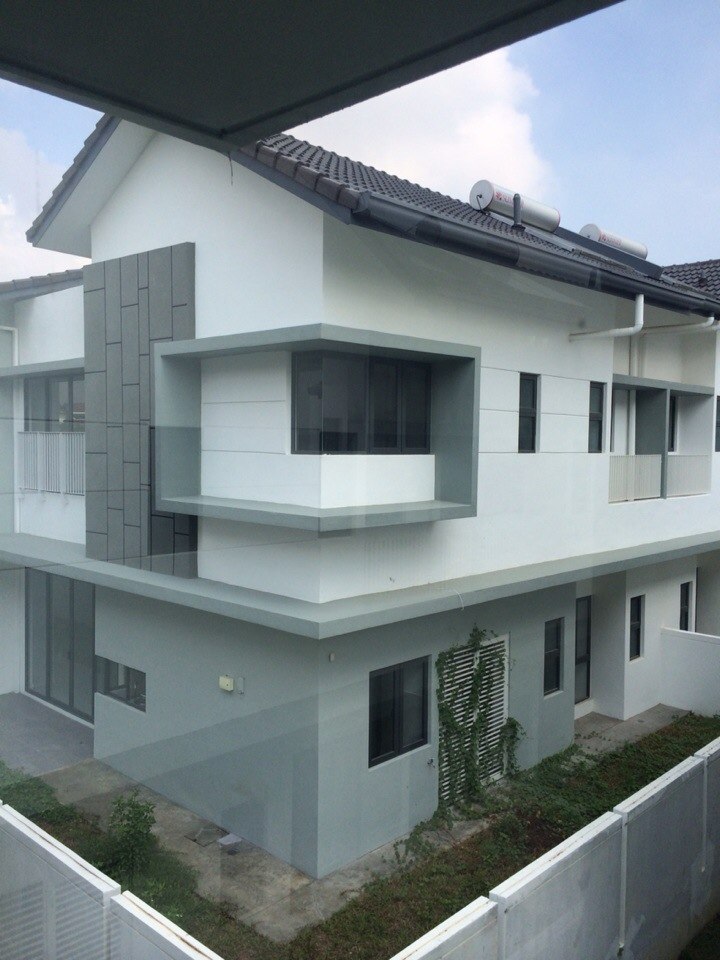
- •1.0 Introduction
- •1.1 Site details
- •2.2 Upper floor : case study
- •2.3 Wall
- •2.3.1 Function
- •2.3.2 Case study
- •2 .3.3 Basic steps for laying bricks:
- •2.4 Ceiling
- •2.4.1 Case study
- •2.4.2 Method of construction
- •2.5 Roof
- •2.5.1 Introduction
- •2.5.2 Function of roof
- •2.5.3 Case Study
- •2.5.4 Flat roof specifications
- •2.5.5 Pitch roof specifications
- •2.6 Door
- •2.6.1 Case Study
- •2.8.2 Case study
- •3.0 Finishers
- •3.1.1 Floor finishes
- •3.1.2 Case study
- •3.1.3 Timber strip laminated floor
- •3.1.4 Plain clay or ceramic floor tiles
- •3..2 Wall finishes
- •3.2.1 Case study
- •3.3 Roof finishes
- •3.4 Ceiling finishes
- •3.5 Window finishes
- •3.6 Door finishes
- •3.7 Summary of elements in the building
- •4.0 Conclusion
- •5.0 References
2.4.1 Case study
Both suspended and non-suspended ceiling are used in the case study. Suspended ceiling are used on top of floor where the non-suspended ceiling are used down at the ground floor. Suspended ceiling gives a few advantages to the building.
For example:
reduce noise
resists moisture
improve insulation
low heating costs suspended ceiling tiles
meet fire safety regulations.
 Typical
suspended ceiling support system
Typical
suspended ceiling support system
2.4.2 Method of construction
Practical method of classification is to group the ceiling system by their general method of construction:
Joint-less ceilings
Jointed ceilings
Open ceilings
In or case study is join-less suspending ceiling. These are ceilings which, although suspended from the main structure, give the internal appearance of being a conventional ceiling.
The final stage is often of plaster applied in one or two coats to plasterboard or expanded metal lathing; alternatively, a joint less suspended ceiling could be formed by applying sprayed plaster.
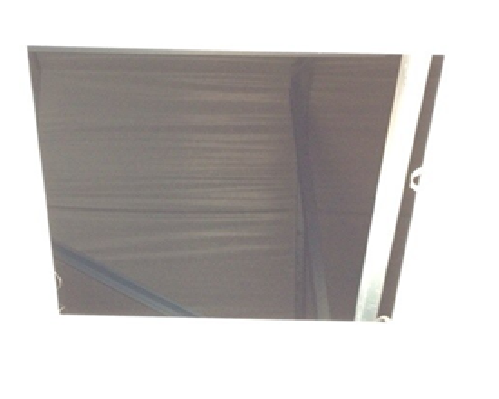


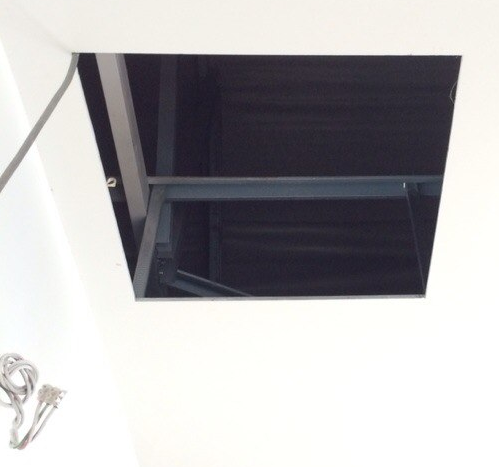
Join-less suspending ceiling
2.5 Roof
2.5.1 Introduction
A roof system consists of a number of interacting materials that when properly combined provide a weather-resistant top surface to a building.
2.5.2 Function of roof
To keep out rain, wind, snow & dust
To prevent excessive heat loss in winter
To keep the interior building cool in summer
Designed to accommodate all stresses encountered
Designed to accept movement due to changes in temperature & moisture content
To provide lateral restraint lateral restraint & stability to adjacent walls
To resist penetration of fire & spread of flame from external sources.
2.5.3 Case Study
The roofs used in the case study are pitched roof, shed roof and flat roof.
Pitched Roof
drains water
insulates main area of heat loss
support snow load
Shed Roof
A single slope
Flat Roof
It’s not perfectly flat. Must have a slight slope for drainage
The roof structure is divided into a few parts which are the car porch part, the front side part and the back site part. Flat roof is used for the car porch. Another part pitched roof, is used for the front side part and shed roof is used for the back side part for the building.
2.5.4 Flat roof specifications
It’s not perfectly flat is less than 10°.
This roof is constructed against hot climates and water accumulation. The flat roof relied on membrane for keeping moisture out. The slight slope of flat roof directs standing moisture to drains at edges.
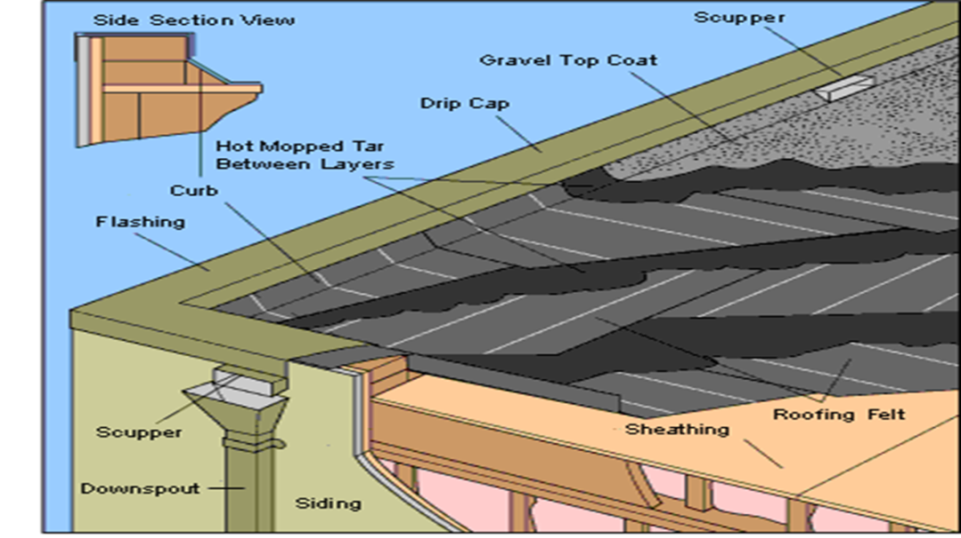
Flat roof
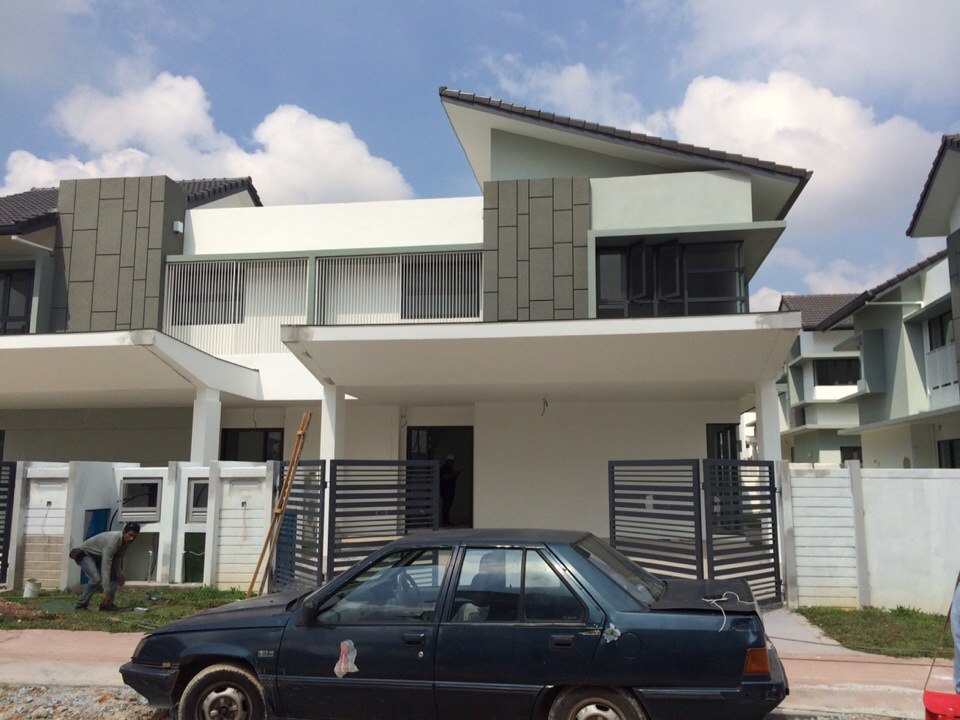
2.5.5 Pitch roof specifications
P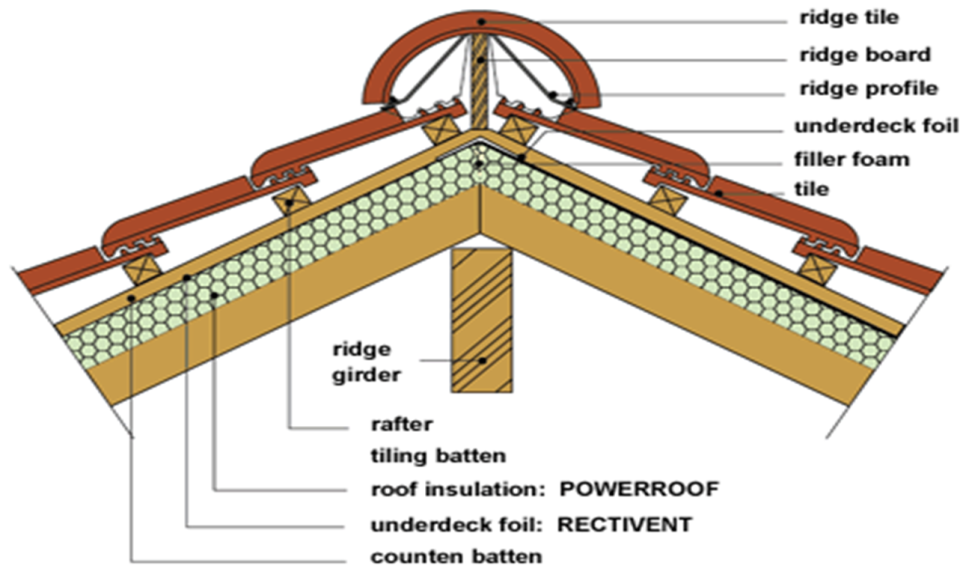 itch
roof angle is slope to the horizontal lies between 10° - 70°.Cost
for pitched roof is higher than flat roof . There’s bigger space
below the roof than flat roof can be made as attic. The slope for
pitched roof depends on the rain (how heavy the rain is, frequency of
the rain) in a year.In Malaysia, the roof built at West Coast
Malaysia & East Coast Malaysia is different due to the factor of
wind and rain.
itch
roof angle is slope to the horizontal lies between 10° - 70°.Cost
for pitched roof is higher than flat roof . There’s bigger space
below the roof than flat roof can be made as attic. The slope for
pitched roof depends on the rain (how heavy the rain is, frequency of
the rain) in a year.In Malaysia, the roof built at West Coast
Malaysia & East Coast Malaysia is different due to the factor of
wind and rain.
Pitch roof
